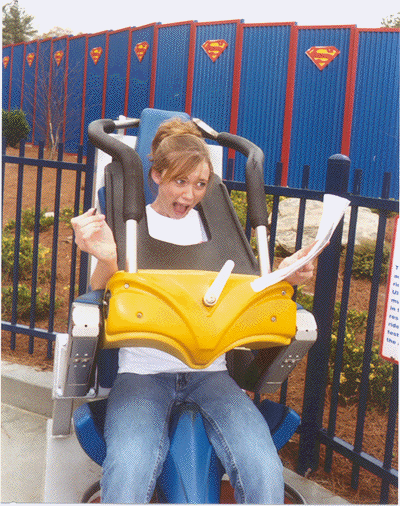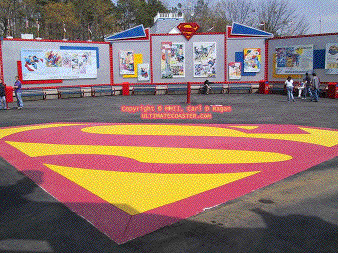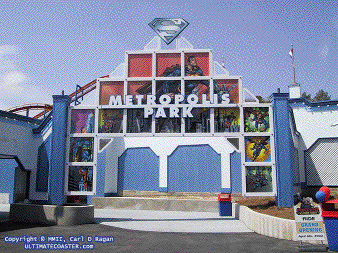


Before you ride:
First off, notice that the wheels are not all the same.
1. Why do you think that different materials would be used to make the wheels? Come up with some physics reasons that might explain these differences.
While waiting in line, record the time it takes for the train to complete its trip. Time several trips to get an average time.
Time #1 ____________ s
Time #2 ____________ s
Time #3 ____________ s
Average time of travel ______________ s

After you ride:
2. Where along the ride did you experience the largest g-force? What part of you experiences the greatest pressure?
3. Draw a fee-body diagram for this location on the ride.
4. Superman - Ultimate Flight contains 2,759 ft of track. Using the average time of travel measured above, calculate Superman's average velocity.

5. If the ride time were cut in half, how would this change the average velocity of the coaster?
6. How would this change in average velocity affect the amount of g-force that you feel during the portion of the ride that you mentioned in question 2?
7. In terms of safety measures, what concerns do the engineers have to address when designing and building a ride of this nature? Do you think that the different materials that make up the wheels of this ride come into play? How?

8. How much of a role does the mass of the passengers play in the average velocity of the ride? (Hint: try to estimate the mass of passengers on a full train vs. the mass of the train itself. -Would there be a huge difference?)
9. Another way of asking the same questions might be...Do you notice a significant difference in the time it takes for the train to return to the loading dock with each ride? What are the chances that the mass of the passengers in a full train is exactly the same with each load?
ANY OTHER OBSERVATIONS AND QUESTIONS?
